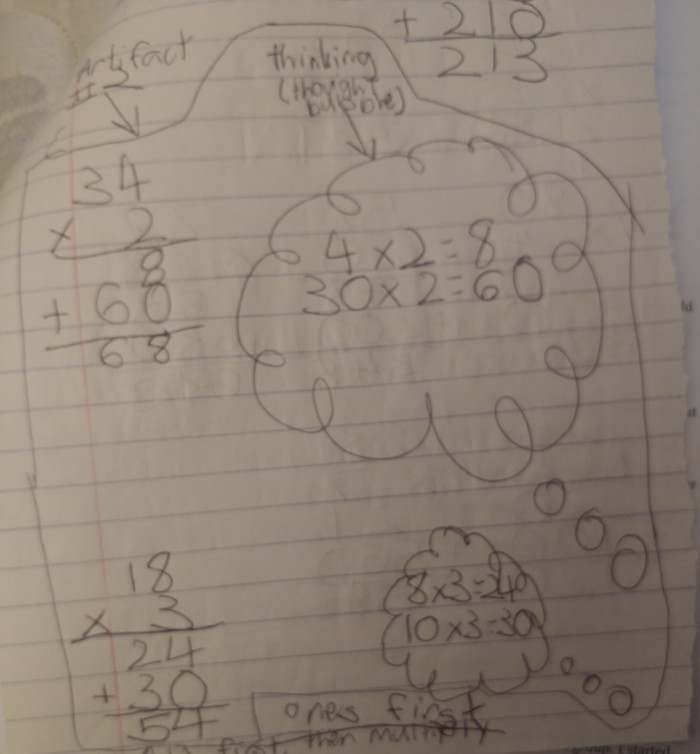The teacher seeks appropriate leadership roles and opportunities to take responsibility for student learning, to collaborate with learners, families, colleagues, other school professionals, and community members to ensure learner growth, and to advance the profession.
When one makes the decision to become a teacher, he or she becomes a leader. In other words, the teacher is who the students see as the person responsible for helping them learn. Therefore, the teacher must show themselves as the students’ leader so that the students know who is responsible for their learning. For teachers to develop those leadership skills, they must collaborate with others to improve their technique to enhance students’ learning. They must collaborate with other teachers, so they can get ideas from one another on how to improve their technique. They can seek help from teachers who have been teaching for a while to see what they do in the classroom, while also seeking opinions from younger teachers to see how they can improve teaching from teachers who have learned more technological approaches to student learning. Either way, it is important for teachers to have input from other teachers. They must also collaborate with students themselves to see how they can teach the way that works best for their learning styles. They can also gain insight from the students’ parents on this topic as well. They can also collaborate with school psychologists, paraprofessionals, counselors, and other school professionals to see which strategies work best for the students with whom they work.
Student Teaching Evaluation: Observation #6
As the leader of the classroom, it is important for the teachers to incorporate feedback from other teachers and supervisors for improvement. My first artifact is my evaluation from my sixth observation in which I was teaching a math lesson on multi-digit multiplication. I had students play a dice game in which they roll two dice to get a two-digit number, then roll a one dice for a one-digit number and multiply the two numbers. I chose this artifact because it is a symbol that I have listened to the feedback from my cooperating teacher and supervisor to improve my teaching. In the past, I have had a hard time incorporating suggestions from others because I thought I knew what I was doing. However, my supervisor and my cooperating teacher only wanted to make sure I was listening to the feedback. When I listened to the feedback I got, went from getting an evaluation that had many areas of improvement to only having a few areas I need to improve, and I will work on improving on those areas throughout my teaching career. I also got mostly threes on this evaluation whereas I would get a mixture of twos and threes on previous observations. I got mostly threes because I listened to suggestions from my cooperating teacher and supervisor to improve my teaching to become a better teacher and a better leader to improve my students’ learning. Also, the lesson was very hands-on, and it was something the kids would enjoy, so the lesson went very well. After all, my cooperating teacher and supervisor only wanted me to become a better teacher, so I can help my students learn. This artifact makes me a better teaching candidate because it shows that I am listening to and writing down feedback to make sure I am a better teacher and leader in the classroom for my students’ learning.

Working with other teachers is another way of improving your practice to help student learning. My second artifact is a page out of my notebook which shows an idea my cooperating teacher showed me to help improve my practice. I was teaching math to third and fourth graders in the resource room, and I have a girl in my classroom with an auditory processing disorder. I noticed that she does not grasp mathematical concepts like her peers do. For some time, I had trouble figuring out how I would differentiate for her. Then, my cooperating teacher showed me how to use the expanded algorithm in multiplication by drawing a thought bubble to show how students could show their thinking of breaking the multiplication problems into simpler problems inside the bubble. I chose this artifact because it shows how I am taking suggestions from my cooperating teacher to help my students see their thinking. This girl started to understand the expanded algorithm when she saw that she could write the simpler problems she had to solve in the thought bubble. I felt like I became a better teacher because I finally figured out what to do to help my students learn. I took a suggestion from my cooperating teacher, and I implemented it. Furthermore, I learned a lot about how my students learned. I learned that they need to see as many visuals as possible, including their own thinking. Therefore, this artifact connects to this standard because it shows how I collaborated with my cooperating teacher to improve my math lesson to help these students learn.
